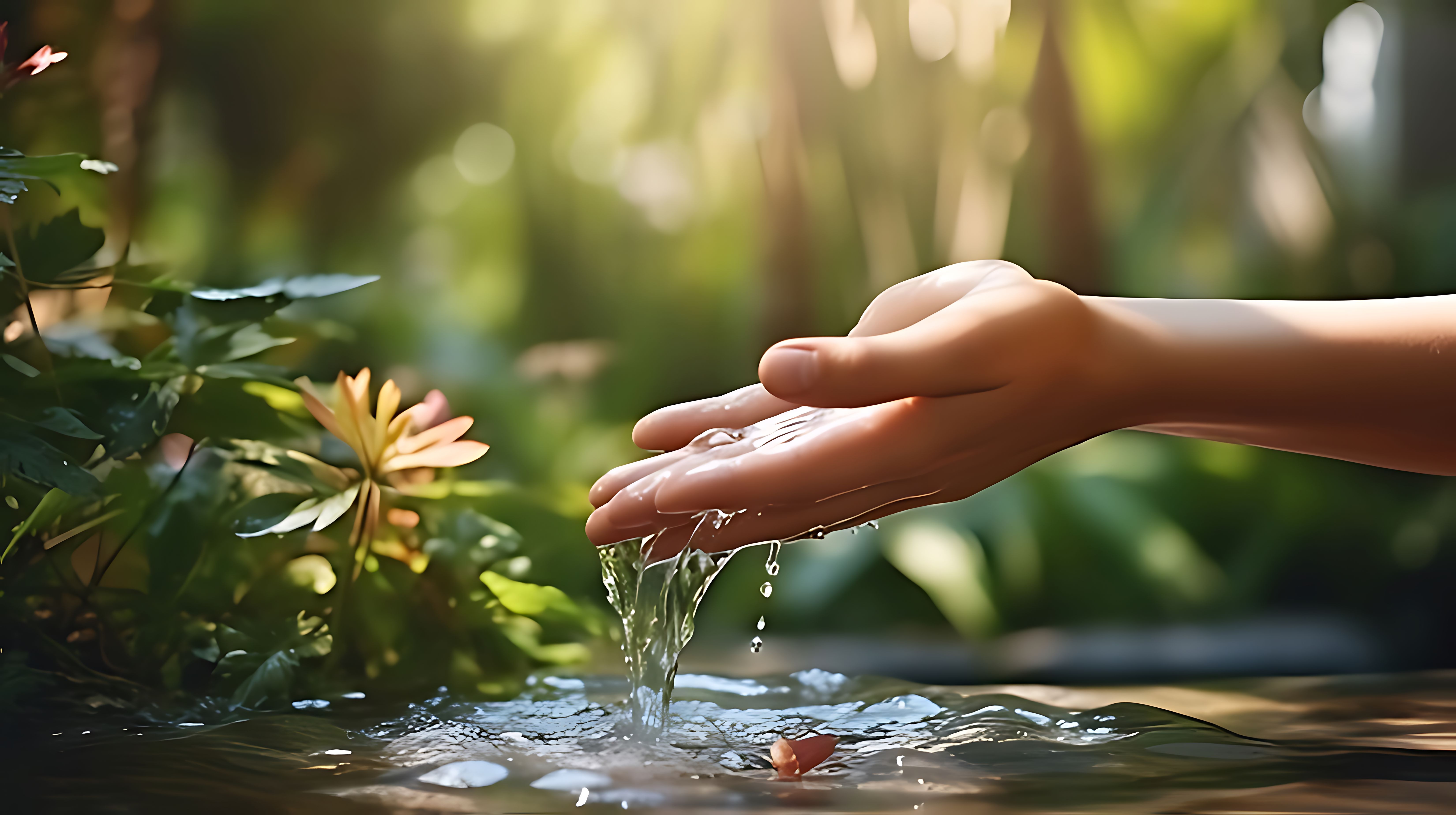Understanding TDS for Drinkable Water: Why It Matters and How to Test It
- 15 May, 2025

When it comes to ensuring the safety and quality of the water we drink, TDS for drinkable water is a crucial parameter that often gets overlooked. TDS, or Total Dissolved Solids, refers to the combined content of all inorganic and organic substances present in water. These substances can include minerals, salts, metals, and even small amounts of organic matter. While some level of TDS is essential for taste and health, too much – or too little – can be a cause for concern. So, what exactly is good TDS for drinking water? How do you measure it? And why should you care? Let’s explore!
What is TDS in Water?
Total Dissolved Solids (TDS) is a measure of the combined concentration of dissolved substances in water, expressed in mg/L or ppm. It includes minerals like calcium, magnesium, sodium, potassium, bicarbonates, chlorides, sulfates, and small amounts of organic matter and heavy metals.
Understanding TDS levels is significant because it directly impacts the taste, safety, and suitability of water for drinking and other purposes. TDS for drinkable water is an indicator of its overall quality – too high, and it may be unsafe or unpalatable; too low, and it may lack essential minerals.
Why TDS Matters for Drinkable Water?
TDS influences several key factors in water quality:
- Taste: Minerals like calcium and magnesium enhance taste. Very low TDS can taste flat; very high TDS can taste salty, bitter, or metallic.
- Health: Essential minerals in moderate TDS levels are beneficial, but high levels of nitrates, arsenic, or lead can be harmful.
- Corrosiveness: Low TDS can leach metals from pipes; high TDS can cause scaling and deposits.
- Appliance Lifespan: High TDS can cause scale buildup and damage appliances.
Good TDS for Drinking Water
What is considered a good TDS level for drinking water? Here’s a general guideline:
- Less than 50 mg/L: Water may taste flat and lack essential minerals.
- 50–150 mg/L: Ideal TDS range for drinking water; tastes good and supplies some minerals.
- 150–300 mg/L: Acceptable range; water still tastes good and is safe.
- 300–500 mg/L: Upper acceptable limit by many regulatory agencies.
- Above 500 mg/L: Not recommended for drinking without proper treatment.
The Bureau of Indian Standards (BIS) recommends a desirable limit of 500 mg/L for Total Dissolved Solids (TDS) in drinking water. Beyond this, water may not taste pleasant and could be unsafe in the long term.
How to Measure TDS in Water?
Measuring TDS is straightforward with the right tools. A TDS water tester (also known as a TDS meter or TDS pen) is a handy device that gives you a quick and reliable reading of TDS levels in your water.
How a TDS Water Tester Works?
A TDS water tester measures the electrical conductivity (EC) of water. Since dissolved solids conduct electricity, the tester converts the EC reading into a TDS value, expressed in ppm.
Using a TDS Water Tester
- Turn on the tester and make sure it’s calibrated (most modern testers come pre-calibrated).
- Dip the sensor end into a glass of water.
- Wait for a few seconds to get a stable reading.
- Note the reading in ppm or mg/L.
It’s that simple! Many testers also come with features like temperature compensation and hold functions for ease of use.
Why You Should Test TDS in Drinking Water?
Regular water tests for TDS are essential for several reasons:
- Ensure safety: High TDS could indicate the presence of harmful contaminants.
- Maintain taste: Proper mineral content improves the flavor of water.
- Protect appliances: High TDS can cause scale buildup, reducing appliance lifespan.
- Tailor water treatment: If TDS is too high, you may need a filtration system like a reverse osmosis (RO) unit.
Factors Affecting TDS in Water
The TDS for drinkable water can vary based on several factors:
- Source of water: Groundwater generally has higher TDS due to mineral leaching from rocks.
- Geography: Areas with hard water (high in calcium and magnesium) often have higher TDS.
- Pollution: Agricultural runoff, industrial waste, and sewage discharge can elevate TDS levels.
- Water treatment: Processes like desalination or RO filtration can reduce TDS levels dramatically.
How to Adjust TDS for Drinkable Water?
If your water tests reveal that your drinking water’s TDS is too high or too low, here’s how you can adjust it:
1. High TDS
If TDS exceeds the recommended limit (above 500 mg/L), consider these solutions:
- Reverse Osmosis (RO) System: This filtration method effectively removes dissolved solids and brings TDS within safe limits.
- Distillation: Boiling and condensing water removes minerals, lowering TDS.
- Deionization: Ion-exchange processes can remove charged particles.
2. Low TDS
Water with very low TDS (below 50 mg/L) may lack essential minerals and taste flat. To address this:
- Mineral Cartridge Filters: Some water purifiers add back beneficial minerals like calcium and magnesium.
- Remineralization: After RO treatment, remineralization filters can restore a balanced mineral profile.
Common Myths About TDS and Drinking Water
-
Myth 1: Low TDS water is always good.
While low TDS water can taste pure, it may lack essential minerals. Water with TDS too low can also be more corrosive to pipes. -
Myth 2: High TDS water is always unsafe.
Not necessarily! High TDS from natural mineral content (like calcium or magnesium) can be safe and even beneficial. The concern arises when TDS includes harmful substances like heavy metals or nitrates. -
Myth 3: Boiling water reduces TDS.
Boiling kills pathogens but does not reduce TDS levels. In fact, boiling can increase TDS slightly because of evaporation.
How does TDS Affect Everyday Health and Cooking?
When we talk about TDS for drinkable water, it’s not just about what’s in your glass – it also affects your entire household’s well-being and the food you cook. Let’s dive deeper into how TDS interacts with health, taste, and daily habits.
TDS and Nutrient Balance
Water isn’t just a neutral solvent—it’s a carrier of minerals that your body needs. Moderate TDS levels (around 150–300 mg/L) contribute essential minerals like calcium and magnesium, which support bone health, muscle function, and even heart health. On the other hand, extremely low TDS water, often from aggressive filtration, is stripped of these minerals, leaving it less nutritious. That’s why good TDS for drinking water is about striking the right balance, not about going as low as possible.
Impact on Digestion and Hydration
The human body relies on a delicate mineral balance for optimal hydration. Water with a moderate TDS for drinkable water can actually help maintain electrolyte balance, supporting better hydration and digestion. Conversely, if TDS is too high, it can increase the risk of dehydration, particularly for people with kidney or heart conditions. In India, where climate-driven dehydration is common, checking your water’s TDS can be a smart preventive health measure.
Influence on Cooking and Taste
Have you ever noticed that tea or coffee made with different water sources can taste surprisingly different? That’s because TDS affects how water extracts flavors from tea leaves, coffee grounds, or even your favorite spices. Water with good TDS for drinking water can enhance the aroma and taste of these beverages, while water with very low or very high TDS can leave drinks tasting either bland or metallic.
Similarly, when cooking rice, pasta, or soups, TDS can change the texture and taste of the final dish. High TDS can make foods taste overly salty or bitter, while low TDS can leave dishes tasting flat. That’s why professional chefs often consider water TDS when crafting perfect recipes.
TDS and Home Appliances
High TDS water isn’t just a health or taste issue—it’s also a maintenance challenge. Minerals like calcium and magnesium can deposit as scale in kettles, coffee makers, dishwashers, and even water heaters. This scale buildup reduces appliance efficiency, increases energy costs, and shortens the lifespan of expensive equipment.
By testing your water with a TDS water tester and adjusting it as needed, you can save money on maintenance and enjoy better performance from all your kitchen appliances.
Myths and Misconceptions
It’s worth repeating: not all dissolved solids are harmful. In fact, many bottled mineral waters proudly display their higher TDS levels as a badge of natural mineral richness. However, untested or unknown water sources with high TDS can hide harmful substances, including industrial runoff or pesticide residues.
Regular water tests beyond just checking TDS are essential for distinguishing between beneficial minerals and dangerous contaminants. That’s where Equinox Labs steps in, offering holistic analysis for everything from microbial safety to pesticide residues.
Practical Tips for Managing TDS at Home
- Use a TDS Water Tester Regularly: Periodically check your drinking water’s TDS to stay informed.
- Choose the Right Filtration System:
- If TDS is too high, install an RO filter.
- If TDS is ideal but you want to remove other contaminants (like bacteria), use a UV filter or an activated carbon filter instead.
- Check Plumbing: Corroded pipes can increase TDS and add harmful metals to your water.
- Store Water Properly: Use clean containers to avoid introducing new contaminants.
TDS and Bottled Water
Many people assume bottled water is automatically of superior quality. However, bottled water TDS can also vary widely:
Some bottled waters are purified by RO, resulting in very low TDS. Others are natural mineral water, with TDS up to 300–400 mg/L, offering a refreshing taste and natural minerals. Always check the label for TDS for drinkable water to ensure you’re getting the quality you expect.
Understanding TDS for drinkable water is more than just a technical curiosity –it’s a crucial part of ensuring your water is safe, healthy, and tastes great. Whether you’re a homeowner, a business, or an institution, monitoring and managing TDS can improve your quality of life and safeguard your health.
Remember, TDS drinkable water isn’t the sole factor to consider, but it’s a powerful indicator. By pairing TDS checks with professional lab testing, you can enjoy water that not only quenches your thirst but also supports your family’s health and culinary adventures.
Equinox Labs can help you decode your water’s TDS story – whether you’re a homeowner, a restaurant owner, or an institution. Our water tests reveal the complete picture, empowering you to choose the right filtration, avoid costly repairs, and protect your well-being.
Contact Equinox Labs today and unlock the secrets of your water – because water quality is the foundation of health, taste, and daily comfort! Ready to ensure your drinking water is safe and healthy?
FAQs
-
What happens if the TDS level in water is too high?
A: High TDS water can taste bad, harm appliances, and impact health over time. -
Is RO water with 16 TDS safe?
A: While it’s clean and safe, it lacks minerals, so consider remineralizing for better health. -
Can boiling water reduce TDS?
A: No, boiling doesn’t reduce TDS; you’ll need filtration like RO or distillation for that. -
Who the guidelines for drinking water TDS?
A: WHO says water under 300 mg/L is excellent, while over 1,000 mg/L might be unpleasant and harmful.



